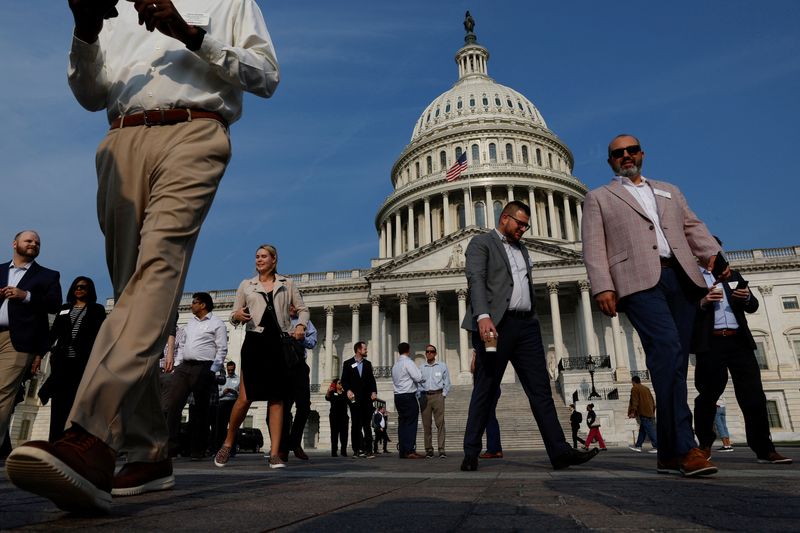[the_ad id="21475"]
[ad_1]
© Reuters. Visitors walk on the plaza at the U.S. Capitol in the midst of ongoing negotiations seeking a deal to raise the United States’ debt ceiling and avoid a catastrophic default, in Washington, U.S. May 24, 2023. REUTERS/Jonathan Ernst
By Pete Schroeder
WASHINGTON (Reuters) – As the United States stares at the risk of a credit downgrade, former Standard & Poor’s officials stood firm behind their seminal 2011 call to slash the country’s rating as the right decision.
That downgrade came days after Washington narrowly averted a default, but S&P went ahead, cutting the U.S. pristine “AAA” to “AA-plus,” citing heightened political polarization and insufficient steps to right the nation’s fiscal outlook.
“We thought that the political polarization in the country was likely to endure, and secondly, we were also concerned about the rising trajectory of debt,” said David Beers, the former head of sovereign ratings for S&P. “On both of our counts, our expectations, if anything…have been exceeded. I have no doubt in my mind that was the right call.”
The downgrade was unprecedented and met with fierce criticism from the then-Obama administration and some congressional leaders, who challenged S&P’s methods and analysis.
S&P had actually placed the U.S. government on a negative outlook four months before the downgrade. And S&P notified the U.S. government of its downgrade decision roughly 24 hours in advance of a formal announcement, according to John Chambers, who headed S&P’s sovereign rating committee.
“It was probably, professionally, the most important decision I’ve made in my life,” said Chambers. “When you lower the rating of a government, they’re always very upset. … We think we’ve been vindicated with the passage of time.”
S&P still maintains the downgraded U.S. rating, with a stable outlook. An S&P spokesperson declined to comment further.
NEW DECADE, SAME ISSUES
As the U.S. again teeters on a debt-ceiling crisis, credit agencies are again assessing the U.S.’s creditworthiness. They are weighing repeated political fights over the nation’s borrowing capacity and a weaker fiscal picture weighing on the nation’s creditworthiness.
Wednesday’s threat by Fitch Ratings that it could downgrade the U.S. credit rating has spiked concerns the nation could see borrowing costs rise and its standing as the backbone of the global financial system weakened.
The move also placed a spotlight on Fitch, which is smaller than the other major rating agencies,…
Click Here to Read the Full Original Article at All News…
[ad_2]
[the_ad id="21476"]
